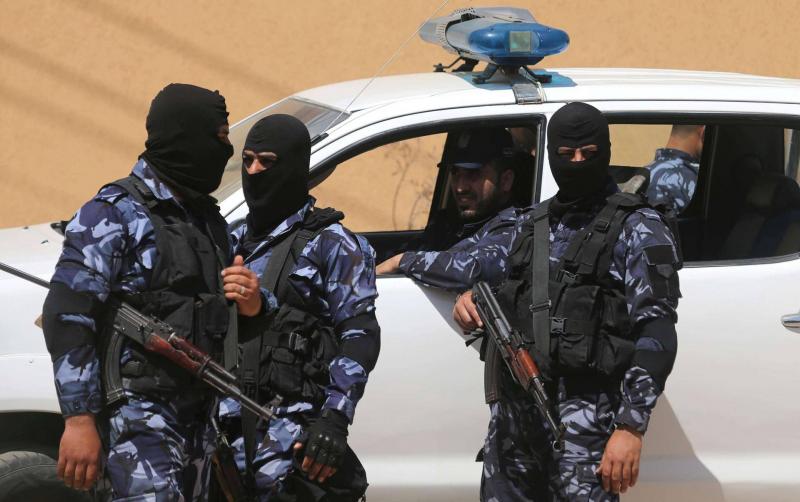Seventeen years of rule in Gaza have ended, during which the disasters of war were transformed into illusions of victory. This period followed years of the Second Intifada, marked by profound human suffering and significant political losses. However, the clamor of slogans drowned out the groans of pain that persisted in the homes of impoverished, afflicted families.
According to a recent report by Bloomberg, "the volume of rubble in Gaza is sufficient to fill a line of garbage trucks stretching from New York to Singapore." The expected amount of debris, according to the United Nations, is 42 million tons. By other estimates, this enormous quantity of rubble cannot be transported outside Gaza and has no destination other than the sea, which will create a vast island of pain and debris. No matter what it is called, it will be a unique island in the universe, encapsulating the story of unimaginable tragedy produced by the Brotherhood project, overshadowed by the chemistry of politics and torn apart by an ideology that is wreaking more havoc on societies in our time than swords ever did.
The upcoming scene is a truce, devoid of any political substance to address the havoc wrought by the war. According to international law, it is "an agreement with a group classified by America as a terrorist organization." More accurately, "the U.S. has brokered an agreement with no political merits benefiting Hamas." This is Hamas's fatal mistake, as it excluded the Palestinian Authority from the beginning of negotiations. The presence of Hamas as a negotiating party does not grant it the legal right upon which political claims are founded. This means that the Palestinian Authority was an important umbrella under which Hamas could somewhat hide from the upcoming accountability related to the 23 countries affected by the actions of their citizens, who were harmed or killed on October 7, which means the value of the agreement with Hamas diminishes with the resolution of the hostage crisis in Gaza, followed by potential accountability.
Looking inward, the issue of border crossings will remain suspended, awaiting the revival of the 2005 agreement, a subject that is lengthy and cannot be completed with the European Union alongside Hamas, which wishes to return to the previous situation when crossings were opened for humanitarian reasons following Hamas's coup—something that is no longer feasible.
Regarding the Netzarim line dividing northern and southern Gaza and the complexities of humanitarian concerns, there are no guarantees of lasting solutions, which implies that Hamas will be geopolitically divided into two parts: in northern Gaza, where nearly half a million civilians reside, and in the south, where over one and a half million civilians crowd the available space, with insufficient room to expand. Particularly as hundreds of thousands who are camping along the beach face a harsh winter approaching, which opens the floodgates to post-truce burdens that do not differ from those before it. This positions Hamas in a genuine confrontation where its police and security apparatus will face two million afflicted individuals, reminding us of the mismanagement of humanitarian issues witnessed in recent months.
In terms of security, there are no guarantees that Hamas leaders can obtain, in terms of safety from assassination, not to mention the "war of constraints," implying that Hamas's options are at the mercy of the winds—they will neither be able to provide their employees with funds, who will soon become a significant financial burden due to the absence of the financial aid that used to flow monthly to the sector, nor will they be able to engage in dialogue regarding reconstruction, nor will they possess any leverage.
In the coming weeks following the truce, Hamas's options will likely revert to seeking the Palestinian Authority once again and will attempt to entice it to enter Gaza and take over civilian administration files, meaning municipalities, while Hamas retains control over security and militarization. This means that the Palestinian Authority would be expected to handle humanitarian affairs, thereby absolving Hamas of any financial responsibilities for civilians, including those working for its government. Ostensibly, this would appear to be a partnership between the Authority and Hamas on the ground, yet this remains within the realm of complex hypotheticals.
Ensuring a limited infrastructure in the coming weeks for over one and a half million displaced people in tents is no easy task and cannot happen without international cooperation. Here, we circle back to the border issue, returning to a closed loop.
The overarching issue of the Brotherhood mentality is that civilians are tools of the project but are not part of the responsibilities. Therefore, when Hamas took control of the Gaza Strip, it inherited an economic structure that had developed over decades, and yet failed to protect this structure, resulting in over 70% of Gaza's population living on humanitarian assistance even before October 7, most of which was provided by Arab countries. What of today, with people in tents instead of homes, without work or life? The United Nations indicates that Gaza will require 80 years to rebuild to its previous condition. This comes at a time when Hamas remains above the wounds of the people, while the Gaza we knew before October 7 is dead, and its inhabitants are searching for a lifeline.




